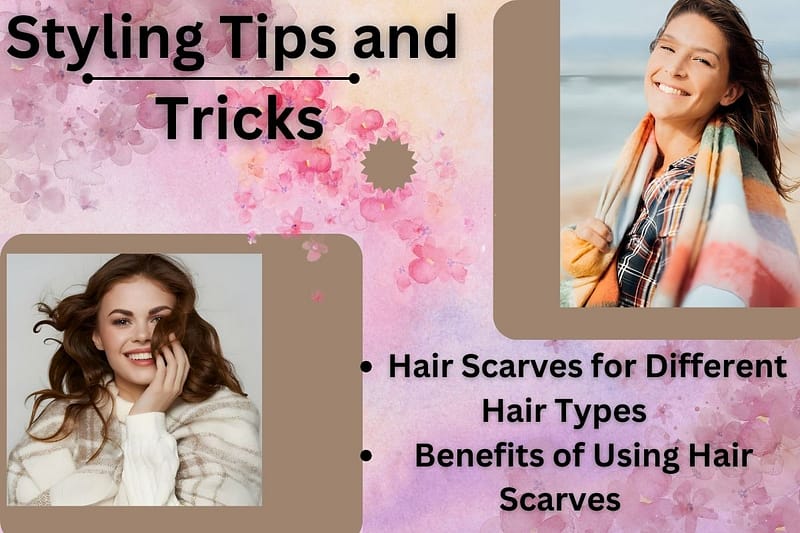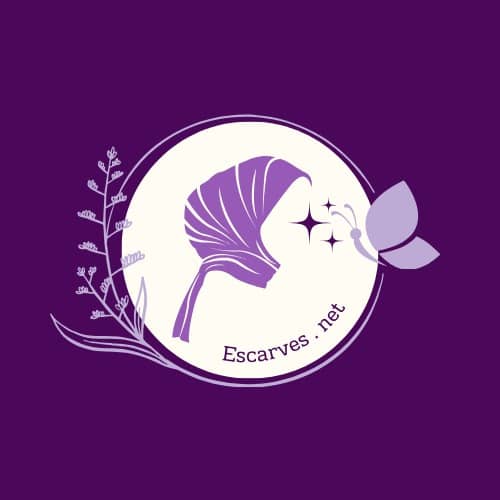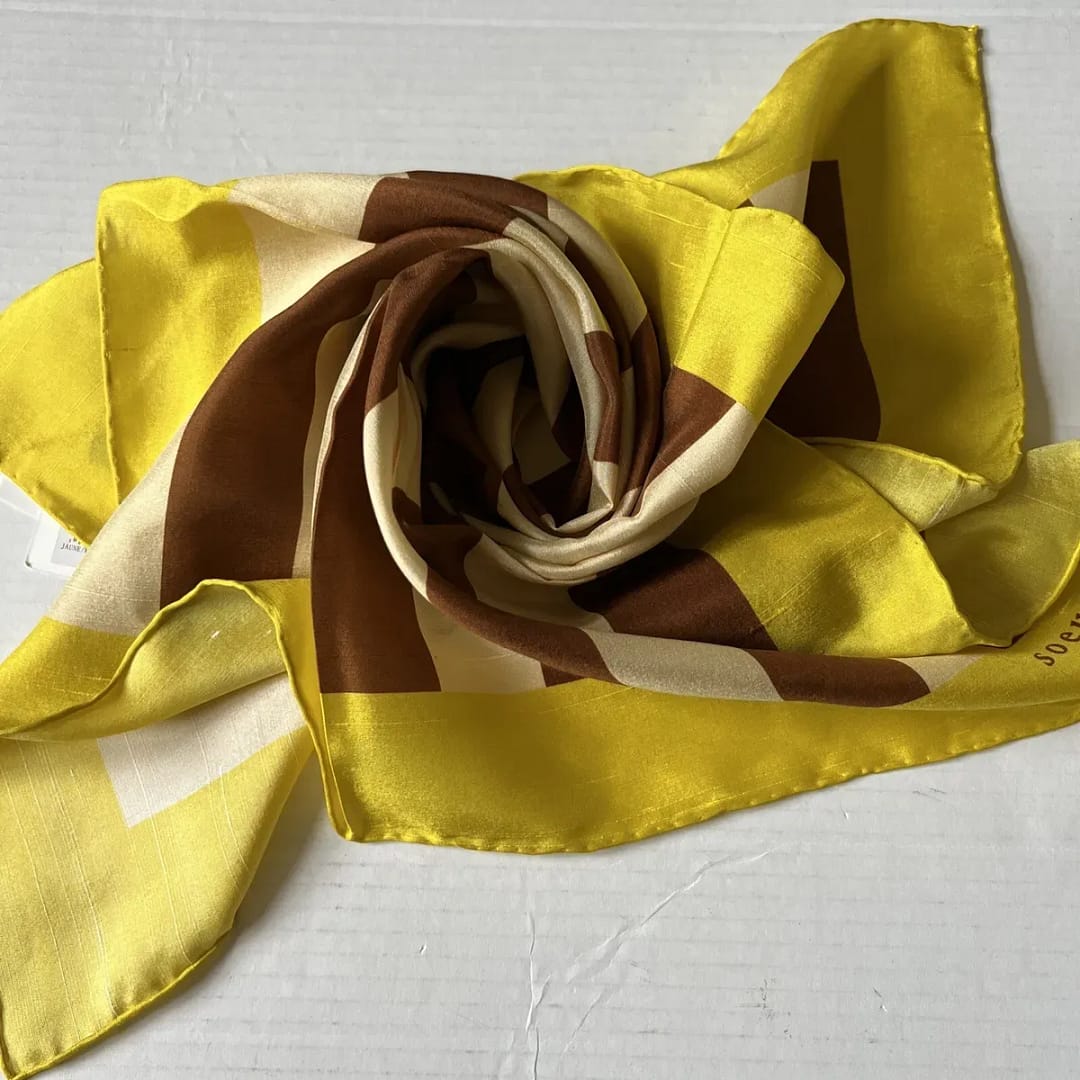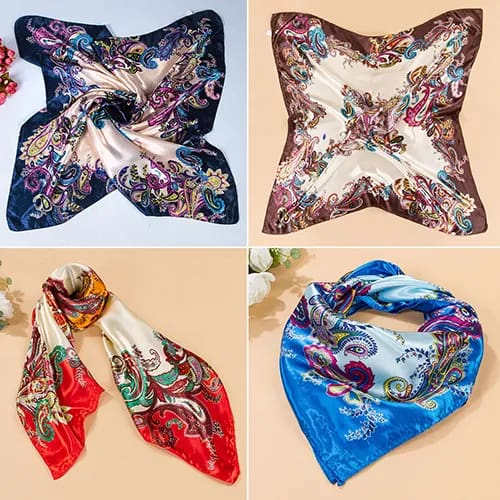A hair scarf is a versatile accessory typically made from fabrics like silk, cotton, or satin, used to adorn and style the hair. It’s a long piece of cloth that can be tied, wrapped, or draped around the head in various ways to enhance hairstyles or protect the hair.
Brief history of hair scarves
Hair scarves have been part of fashion history for centuries, tracing back to ancient civilizations like Egypt and Rome. In these early times, scarves were often worn for practical reasons, such as protecting the hair from dust and sun exposure. Over the years, they evolved into symbols of elegance and sophistication, frequently seen in traditional clothing from different cultures worldwide.
Importance of hair scarves in fashion and styling
Hair scarves hold significant importance in both fashion and styling. They offer a simple yet effective way to elevate any hairstyle, adding a touch of flair and personality. Whether used as a statement piece or a subtle accent, hair scarves can transform a look from ordinary to extraordinary. Additionally, they serve practical purposes like protecting hair from environmental damage, reducing frizz, and concealing hair imperfections, making them indispensable accessories in the realm of fashion and styling.
Types of Hair Scarves
Silk hair scarves
Characteristics and benefits
Silk hair scarves are known for their luxurious feel and smooth texture. They are lightweight and gentle on the hair, reducing friction and minimizing breakage. Silk scarves also have natural moisture-wicking properties, helping to keep the hair hydrated and preventing dryness. Additionally, silk scarves provide a polished and elegant look, making them perfect for both casual and formal occasions.
Popular silk scarf styles
Some popular styles of silk scarves include the classic knot, where the scarf is tied around the head in a simple knot or bow. Another popular style is the turban wrap, where the scarf is wrapped around the head and twisted into a turban-like shape. Silk scarves can also be draped over the head like a headband or folded into a narrow band and tied around a ponytail for a chic accent.
Cotton hair scarves
Versatility and comfort
Cotton hair scarves are prized for their versatility and comfort. They are breathable and absorbent, making them ideal for warm weather or strenuous activities. Cotton scarves come in a wide range of colors and patterns, allowing for endless styling options. They are also easy to care for and can be machine-washed for convenience.
Common cotton scarf styles
Common styles of cotton scarves include the headband style, where the scarf is folded into a narrow band and worn across the forehead or pushed back on the head. Cotton scarves can also be tied in a traditional knot or bow, or wrapped around the head like a turban for a bohemian-inspired look. Additionally, cotton scarves can be used as a protective covering for the hair during sleep to prevent frizz and breakage.
Satin hair scarves
Luxurious appearance and texture
Satin hair scarves are prized for their luxurious appearance and silky texture. They have a smooth and glossy surface that adds a touch of sophistication to any hairstyle. Satin scarves also help to reduce friction and static electricity, keeping the hair smooth and tangle-free. Additionally, satin scarves have a lustrous sheen that enhances the overall look of the hair.
Styling options with satin scarves
Styling options with satin scarves are endless. They can be tied in a variety of ways, including the classic knot, headband style, or turban wrap. Satin scarves can also be used to create elaborate updos or braided hairstyles, adding a touch of glamour to any look. Additionally, satin scarves can be wrapped around the base of a ponytail or bun for a sleek and polished finish.
How to Wear a Hair Scarf
Classic knot
To create a classic knot style, fold your hair scarf into a long strip and place it over your head. Tie a simple knot at the top of your head, adjusting the scarf for your desired tightness. Let the ends of the scarf hang down or tuck them underneath the knot for a neat finish.
Headband style
For a headband style, fold your hair scarf into a narrow band. Place the scarf across your forehead or just above your hairline, then tie it securely at the nape of your neck. Adjust the scarf to ensure it lays flat against your head, and let the ends hang loose or tuck them under for a clean look.
Turban wrap
To achieve a turban wrap, start by folding your hair scarf into a wide band. Place the center of the scarf at the front of your head, then cross the ends at the nape of your neck and bring them back to the front. Twist the ends together and tuck them under the scarf at the front, adjusting the fabric to create a turban-like shape.
Bow tie
For a playful bow tie style, fold your hair scarf into a long strip and wrap it around your head, tying it into a bow at the top or side. Adjust the size and shape of the bow to your liking, ensuring it sits securely on your head. Let the ends of the scarf hang down or tuck them under for a polished finish.
Ponytail accent
To accentuate a ponytail, fold your hair scarf into a narrow band and wrap it around the base of your ponytail. Tie the scarf securely, then fluff out the fabric to create a voluminous accent around your ponytail. You can also leave the ends of the scarf hanging down for added flair.
Braid embellishment
To embellish a braid with a scarf, start by braiding your hair as desired. Then, take a small hair scarf and tie it around the base of the braid, securing it with a knot or bow. Let the ends of the scarf hang down alongside the braid, or wrap them around the braid for a decorative touch. Adjust the scarf to ensure it stays in place throughout the day.
Styling Tips and Tricks

Matching scarves with outfits
When matching scarves with outfits, consider the color, pattern, and texture of both the scarf and the clothing. Opt for complementary colors or choose a scarf that adds a pop of color to a neutral outfit. Additionally, coordinate patterns and textures to create a cohesive look. For example, pair a floral scarf with a solid-colored dress or a striped scarf with a simple blouse for a stylish ensemble.
Incorporating scarves into various hairstyles
Incorporating scarves into various hairstyles can add flair and personality to your look. Experiment with different scarf styles, such as headbands, turbans, or ponytail accents, to complement your hairstyle. You can also use scarves to accessorize braided hairstyles by wrapping them around the base of the braid or weaving them into the braid itself. Get creative and explore different ways to incorporate scarves into your favorite hairstyles for a unique and stylish look.
Adding accessories to complement the scarf
To complement your scarf, consider adding accessories such as earrings, bracelets, or hair clips. Choose accessories that complement the colors or patterns of the scarf and enhance your overall look. For example, pair a floral scarf with delicate flower earrings or add a statement necklace to draw attention to your scarf. Accessories can elevate your scarf style and add a polished finishing touch to your outfit.
Experimenting with different scarf sizes and shapes
Experimenting with different scarf sizes and shapes can help you discover new ways to style your scarf. Try using larger scarves as shawls or wraps for chilly evenings, or tie them around your waist as a belt for a trendy look. Smaller scarves can be tied around your wrist or handbag for a playful accent, or worn as a hair accessory for a touch of vintage charm. Don’t be afraid to mix and match scarf sizes and shapes to create unique and eye-catching looks that reflect your style.
Hair Scarves for Different Hair Types
Straight hair
For straight hair, hair scarves can add volume and texture to your hairstyle. Experiment with tying scarves in various styles such as the classic knot, headband style, or turban wrap to create interest and dimension. Silk scarves work particularly well with straight hair as they glide smoothly and prevent frizz.
Curly hair
Curly hair can benefit from hair scarves by helping to tame frizz and define curls. Opt for satin or silk scarves, which are gentle on curly hair and help retain moisture. Wrap the scarf around your head in a turban style or use it as a headband to keep your curls in place while adding a stylish accent to your look.
Natural Hair
Hair scarves are versatile accessories for natural hair, offering protection and style. Satin scarves are especially beneficial for natural hair as they help retain moisture and reduce breakage. Experiment with different scarf-tying techniques such as the pineapple wrap or braid embellishment to showcase your natural hair texture while keeping it healthy and protected.
Short hair
Short hair can be styled with hair scarves to add flair and personality to your look. Tie a small scarf around your head as a headband or use it to create a retro-inspired bow tie style. Silk or cotton scarves are ideal for short hair as they are lightweight and won’t overwhelm your hairstyle. Get creative with scarf placement to accentuate your short hair and express your style.
Long hair
For long hair, hair scarves can be used to create elegant updos or add a pop of color to your hairstyle—experiment with wrapping a scarf around a ponytail or bun for a chic and sophisticated look. Silk or satin scarves work well with long hair as they glide smoothly and won’t cause tangles. Try different scarf styles and tying techniques to showcase your long locks and elevate your overall look.
Benefits of Using Hair Scarves
Protection from environmental damage
Hair scarves act as a protective barrier against environmental elements such as sun exposure, wind, and pollution, which can cause damage to the hair. Covering the hair with a scarf helps to shield it from harmful UV rays, prevent moisture loss, and reduce the risk of dryness and brittleness caused by environmental factors.
Minimizing frizz and breakage
Hair scarves help to minimize frizz and breakage by reducing friction between the hair strands and external surfaces such as clothing or bedding. Silk and satin scarves, particularly, have smooth textures that glide over the hair, preventing tangles and minimizing friction-induced damage. Wrapping the hair in a scarf helps to maintain its moisture balance and reduce the risk of breakage and split ends.
Adding flair to everyday hairstyles
Hair scarves are versatile accessories that can instantly add flair and style to everyday hairstyles. Whether worn as a headband, wrapped around a ponytail, or tied into a chic turban, scarves can elevate even the simplest of hairstyles. With a wide range of colors, patterns, and textures available, hair scarves offer endless possibilities for creating unique and eye-catching looks that reflect your style.
Concealing hair imperfections
- Hair scarves provide a convenient solution for concealing hair imperfections such as greasy roots, bad hair days, or grown-out roots between salon appointments. Wrapping a scarf around the hair can help to camouflage any flaws or inconsistencies in the hair texture or color, allowing you to maintain a polished and put-together appearance with minimal effort.
- Overall, hair scarves offer numerous benefits beyond just style, making them an essential accessory for protecting and enhancing the health and appearance of your hair.
Conclusion
- Hair scarves are versatile accessories that offer a multitude of benefits for hair health and style. They provide protection from environmental damage, minimize frizz and breakage, add flair to everyday hairstyles, and can even conceal hair imperfections. Whether you have straight, curly, natural, short, or long hair, there’s a hair scarf style that can enhance your look and elevate your hair care routine.
- As you conclude your journey with hair scarves, I encourage you to continue exploring different scarf styles and techniques. Experiment with various tying methods, colors, patterns, and textures to discover unique looks that suit your style and preferences. Don’t be afraid to step outside your comfort zone and try something new—after all, hair scarves offer endless possibilities for creativity and self-expression.
- Incorporating hair scarves into your style is not just about following trends, but about expressing your individuality and embracing your unique beauty. Whether you prefer classic elegance, bohemian chic, or modern sophistication, there’s a hair scarf style that can complement your personality and enhance your overall look. So, embrace the versatility and creativity of hair scarves, and let them become an integral part of your signature style.







